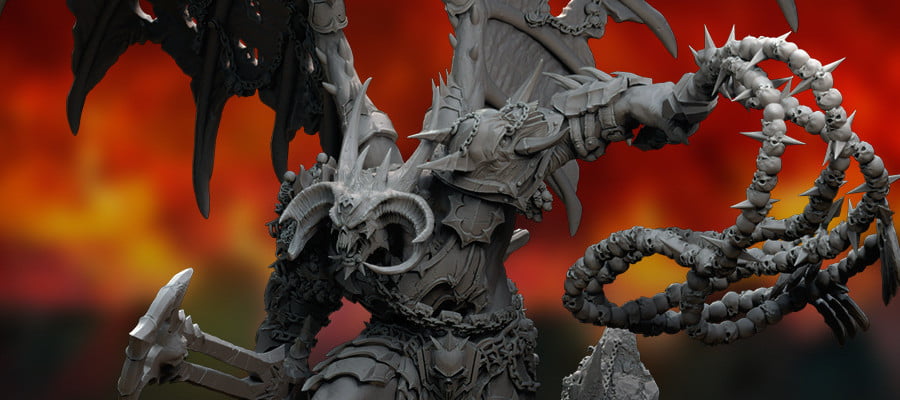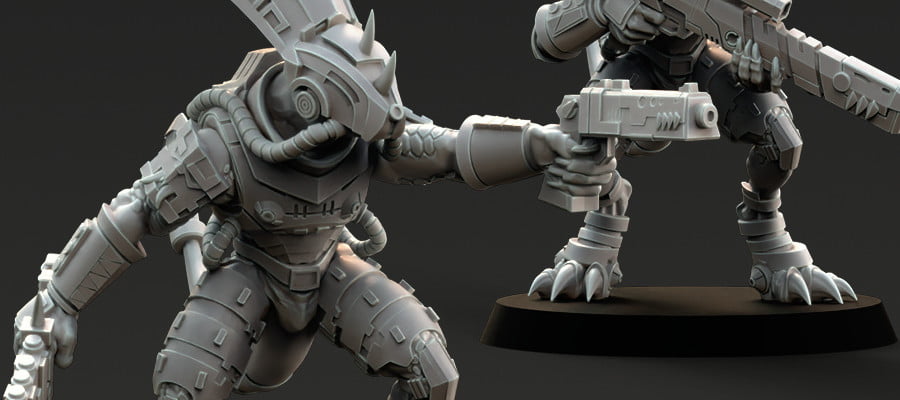One Page Rules is a family of tabletop material games with the design principle that the core rules for playing the game takes one page (back and front), and each individual faction you want to play can have all its game mechanical information conveyed again, on one page (back and front).

Once upon a time, this kind of thing would be considered an indie game, an extremely streamlined, microgame style arrangement. But the thing that sets One Page Rule aparts is that it has one of the most remarkable potential scopes of any game of its genre I’ve ever seen.
One Page Rules is designed to work with paper miniatures made on an A4 printer. It also can have a hardcover printed rulebook, and a full 3d printed army of system-specific miniatures. Games that operate with paper miniatures and terrain are often unable to scale up – they leave it up to you to customise and make your own material for the game uniquely, or you know, use your other miniatures for that other game.
And yeah, that’s valid, but it also makes the game limited to siphoning players from another, pre-existing space. While lots of attempts can be made to make mini-free, paper-only tabletop wargames (and there are those! And a lot of them are fun and good!), totally new players aren’t as likely to pick them up and make them into their forever game because the trajectory of those games inexorably leads you towards little plastic mans on a board because those are neat little doll toys and we like those things. These games are treated, typically, as introductory games, as cheap alternatives to the ‘real’ games.

One Page Rules instead treats itself as the game system that functions as both an escape from Warhammer‘s existing market capture, and a starter game that has its own means of real expansion, presented in the form of 3d printed miniatures and terrain. It tries to defray the normal, up-front costs and demands of a Warhammer style game game by presenting, at first, a free model, which you can then add to with a patreon subscription model.
This subscription gives you access to more tools, things for customising specific army designs, tools for creating your own ‘army page’ and loadouts, but also STLs for 3d printing. That’s not to say you have to 3d print an army – but if you want to, it’s a very affordable way to get the miniatures. You can even order them as printed miniatures from one of their services, if you’re not investing in a 3d printer.
The result is that this is a print-and-play, free tabletop miniatures game that has an entire upgrade path that you can chase as far as you want even if you stop at ‘I printed it out and played it a few times.’ Normally, print and play games lack scope. There’s only so much they can supply you in your home, with a printer. And One Page Rules is built on the edge of a really genuinely interesting space for the future going forward: We are going to see this technology pushing into this kind of space pretty aggressively going forward.

The simple answer to ‘why I haven’t played it’ is I don’t have anything for it. I don’t have a physical space to play it, and while I have an army of miniatures sitting in a drawer somewhere in my house, I honestly do not know if it’s going to be where I go to look for it. They have support for ‘my army.’ I have a friend who has a Tau army, and I have some Nids, and when we meet up again –
Finally
Maybe
After all these years
Maybe we’ll play with these One Page Rules. They look efficient, they look quick, they look like they capture the spirit of what I want these things to do, and I don’t need to lay out a big pile of money to do it. Even if I was going to pirate a Warhammer codex to get started, so as to keep the costs as close to zero as possible, the models I have wouldn’t necessarily fit the new rules, I would need to sift through complex rules to do it, and then I’d need to print out multiple pages of units to get my handle on how things play.

The thing with this kind of game is that the game being simple and fluid allows for emergent mechanics. The rules systems don’t need to be really complex or handle lots of stuff, because the play experience itself creates a lot of opportunities for interactions of simple pieces to create interesting opportunities for complex decisions. I don’t know how I’m going to see these armies deform around terrain because I don’t have the means to process that in my head (yet), but when I get to play with this system a bit, I’ll learn those things. And then maybe the game will get predictable and reliable, but if that’s the case, then the next step is to start involving the advanced rules, if we agree upon them.
The Game Pile isn’t just for games that are, you know, good, or games that deserve a bollocking. This is a game that I find interesting. It’s a game I find intriguing in how it works and how it’s distributed and how the industry may have to change, in light of things like this.
And this Decemberween you can play it, if you have even a modest printer.